Guacamaya and the Ancient Maya in Copán
The Return of the Scarlet Macaws into the Copán Valley - Issue # 46
Ear-piercing squawks greeted us as we entered the ancient Maya archaeological site of Copán. We didn’t have to look long to see the source of this noise: gorgeous scarlet macaws were sitting in the trees flanking the wide trail leading into the center of the site, as if having a debate erupting in arguments where everyone was screaming their opinion. Eventually, the group seemed to have given up trying to convince each other and flew away - right above our heads.
Guacamaya is one of the words for the macaw used in Spanish. It is a Nahuatl1 word, the one we also used for the gorgeous birds every time we heard or saw them. It seemed more fitting, considering where we were.
As we walked farther, I kept looking up into the trees. I spotted another pair, sitting together in a tree.
Scarlet macaws mate for life, so it was no wonder we often saw couples in the park, both sitting together on a branch or flying together.
Since I was looking up, I also noticed large green man-made barrels on several of the trees. As I learned from a sign along the road, they were nesting sites for the macaws.
Once almost extinct from the area, conservation efforts brought back the guacamaya to the Maya area of the Copán Valley.
The national bird of Honduras, the scarlet macaw, guacamaya roja, or guara roja was a sacred bird for the ancient Maya. He is known as the Principal Bird Deity or the Celestial Bird, representing the powerful sun god, Itzamna, or K’inich Ahau, in flight between earth and heaven with its vibrant colors.
Maybe because of this association, proving their descendants from gods, Maya royals and nobles used the bright guacamaya feathers to decorate their headdresses.
Scarlet macaws appear everywhere on ancient Maya monuments, more often in Copán than anywhere else. It is represented in a glyph in the writing system and found as decorative accessories in the elite’s clothing, even beyond the headdresses.
The name of Copán dynasty’s founder, K’inix Yax K’uk’Mo, translates as Great Sun, Quetzal Macaw the First.
Many of the major monuments have macaw representations. One of the most obvious is the ball court, filled with sculptures representing macaws.
Other representations of macaw heads are also on the corners of the ball court benches.
The structures on sides of the ball court are also decorated with macaw representations.
Besides representing the bird on their monuments, the ancient Maya of Copán traded their feathers with other Maya cities, and they may have held them as highly valued pets.
Since they was so valued, the ancient Maya probably took care of the colorful, gorgeous guacamayas.
However, over time, long after the rise and fall of the ancient Maya kingdom of Copán, scarlet macaws just about disappeared from the area. Destruction of their habitat already started during the time the ancient kingdom of Copán expanded without much regard to the environment.
In more recent centuries, besides the destruction of their habitat, hunting, and illegal wildlife trade - as they are still prized pets people pay a high price for - decimated their numbers to the point of near extinction from the Copán Valley.
Starting in 2011, conservation efforts helped reintroduce the guacamaya into the Copán Valley.
It started with installation of specially designed nests throughout the archaeological site of Copán, and monitoring the reproduction process.
Besides the nests, they have several feeding stations.
Guacamaya eat fruit, seeds, nectar, and insects. In the feeder stations, I often saw them pick up watermelon pieces and sometimes carrots.
Even more important, educational workshops held monthly in the public schools of Copan and other public campaigns created awareness and support for the conservation of the scarlet macaw.
Over the next few years, they optimized the reproduction program and released the young macaws from the breeding program in the archaeological park. They also installed other macaw couples throughout the Copán Valley, while continuing educational programs and extending it to national levels.
About a decade after the conservation program started, scarlet macaws fly freely throughout the Copán Valley, adding their gorgeous colors and loud squawks to the surroundings.
They still have the man-made nests in the trees around the ruins, and feeding stations for the macaws of the park, but these gorgeous birds also live outside the park and in nests they make themselves, eating fruit they pick themselves.
We have seen large groups of them leaving the site at dusk, flying together in other, maybe more forested areas of the Valley. They are a bright, colorful, noisy addition to the surroundings, one that makes us happy and gives us hope for the future.
An example of a successful conservation project.


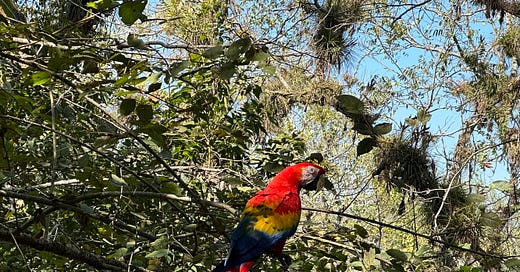


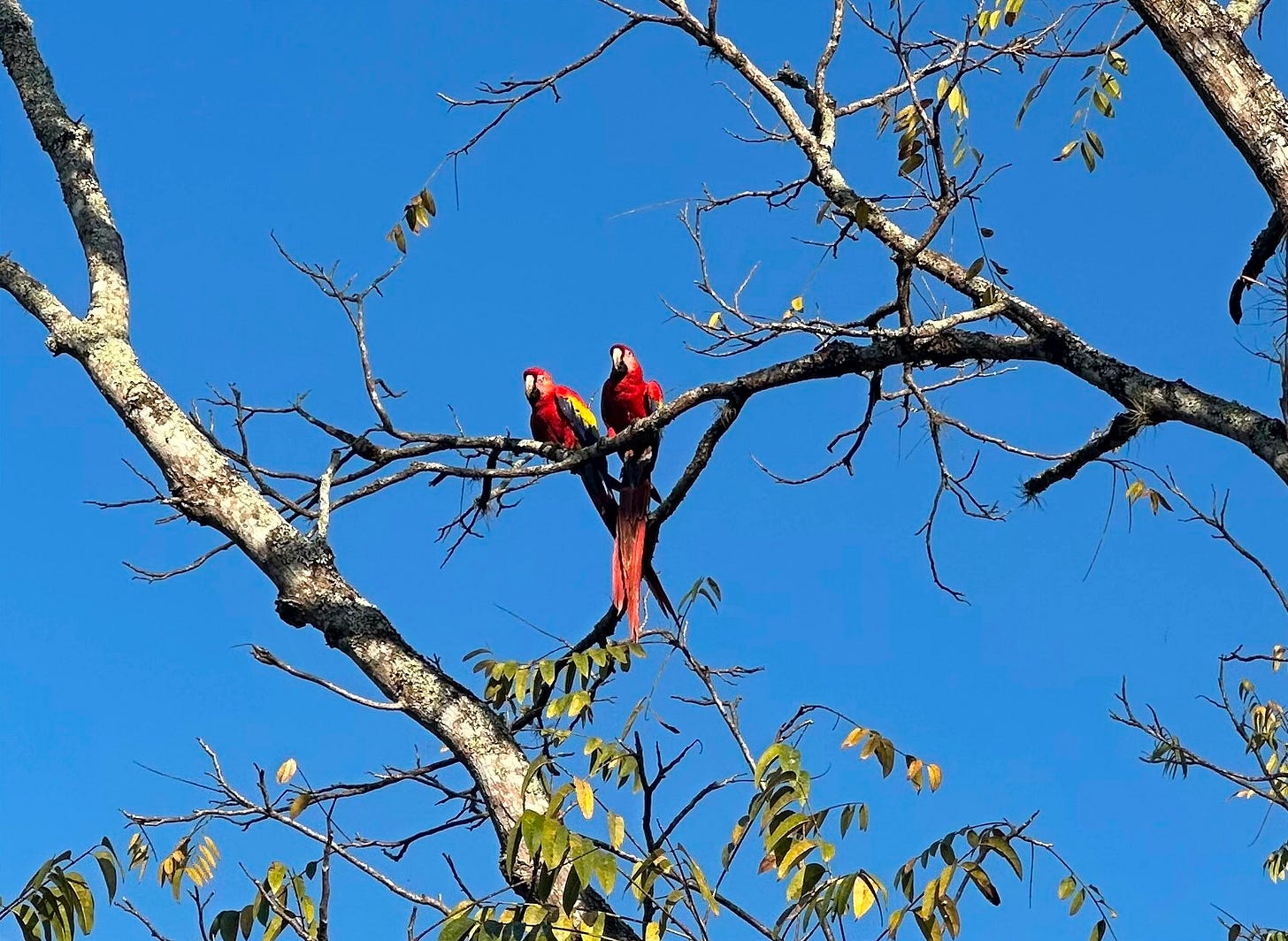

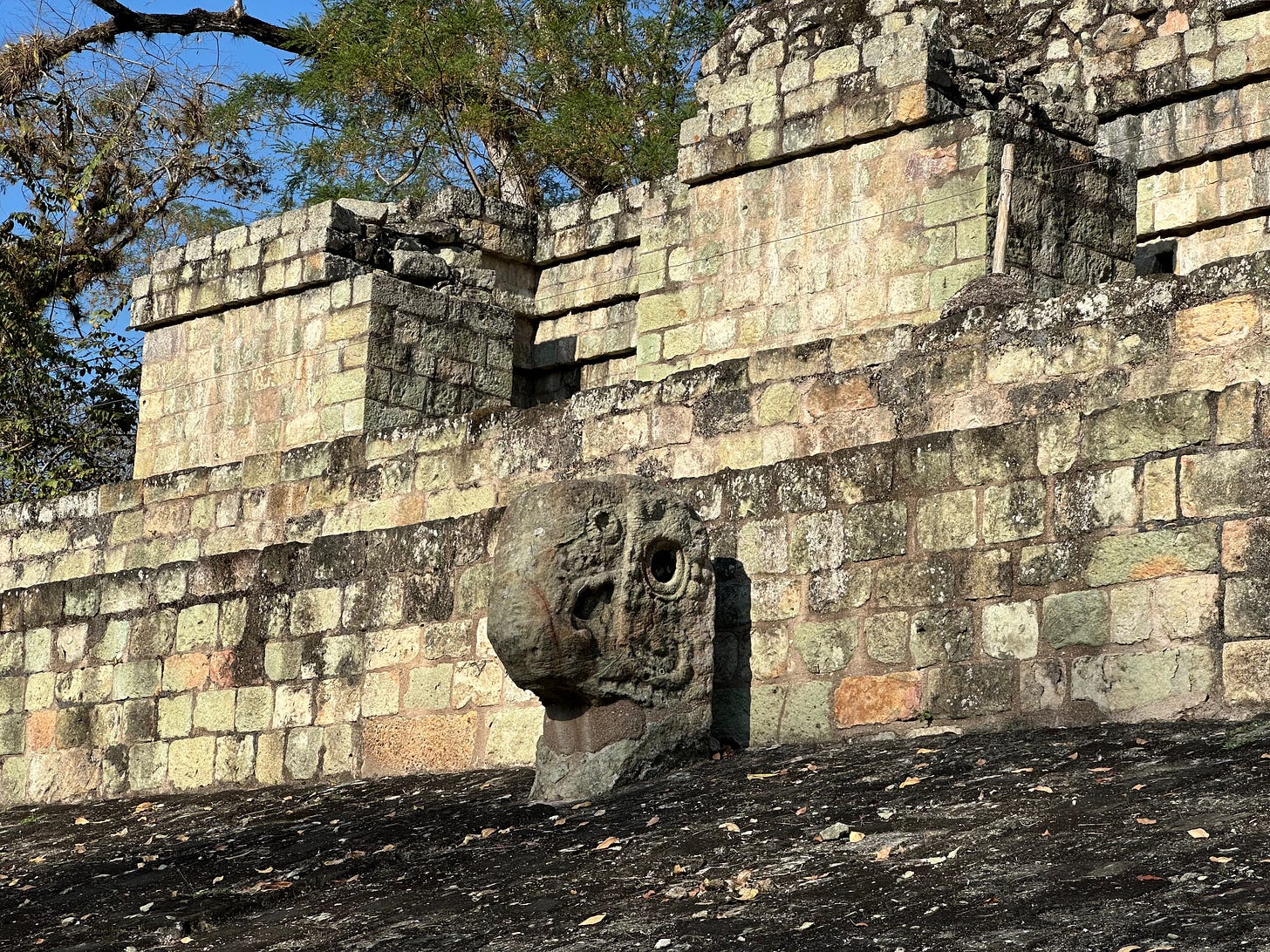
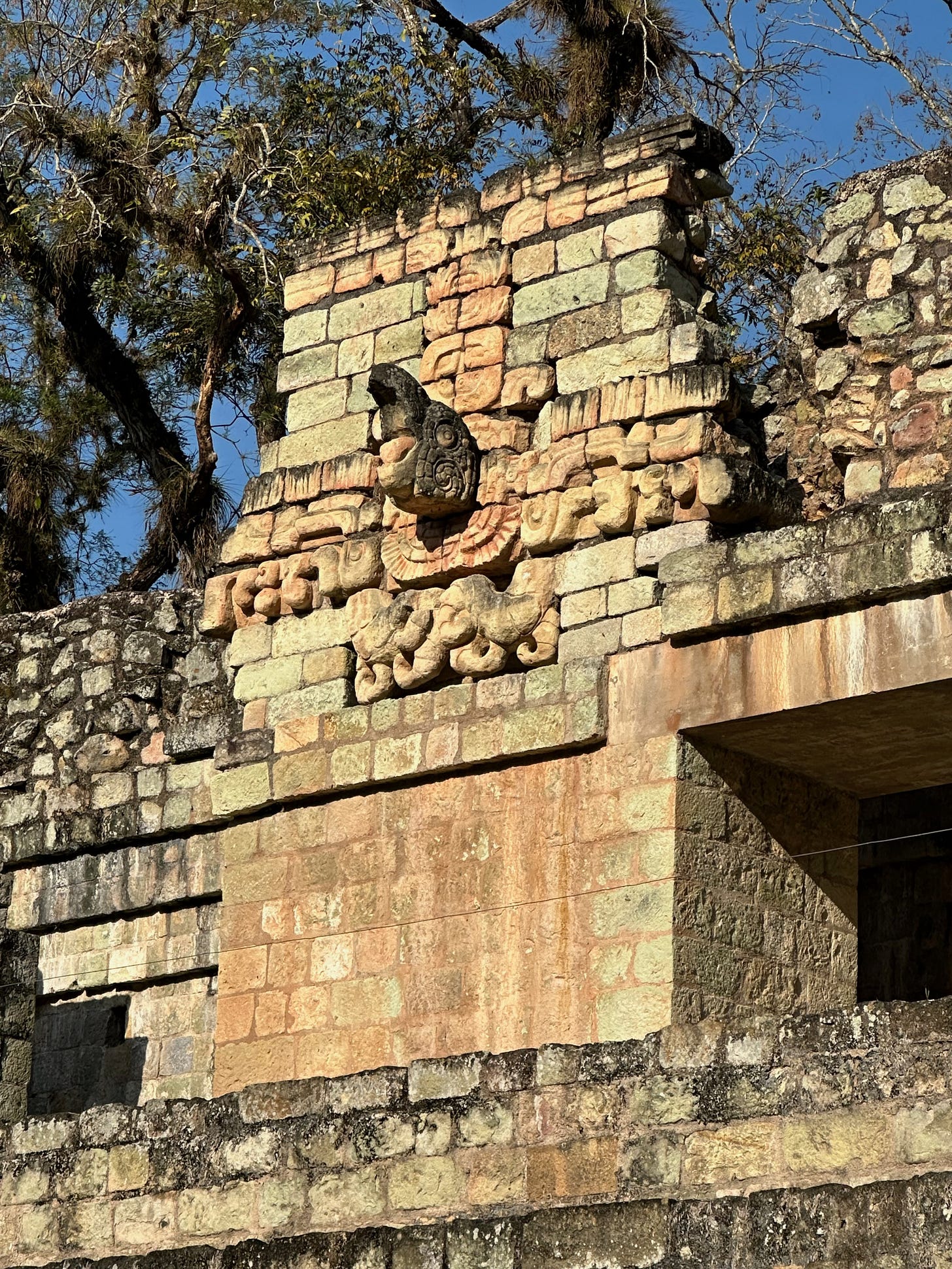
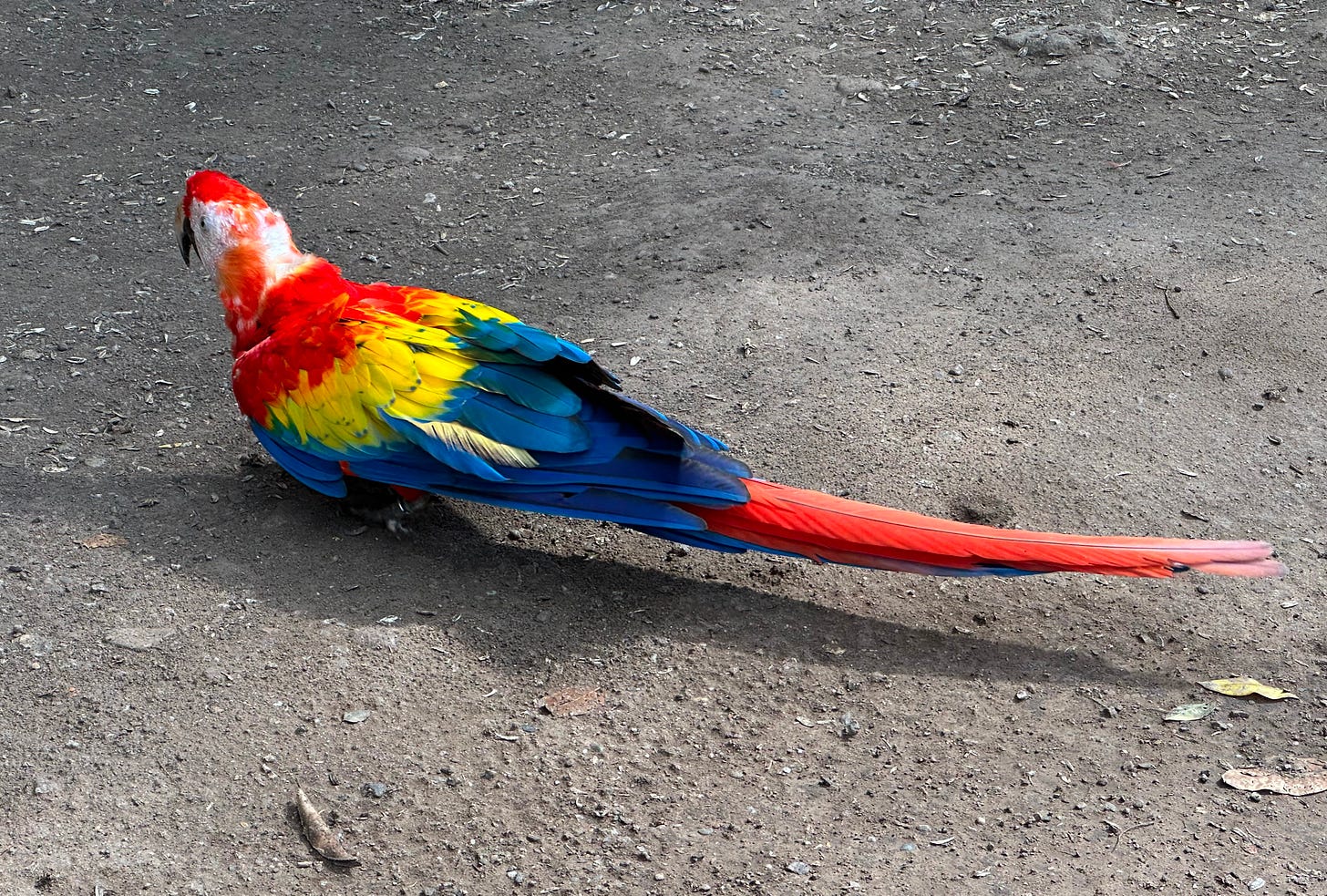
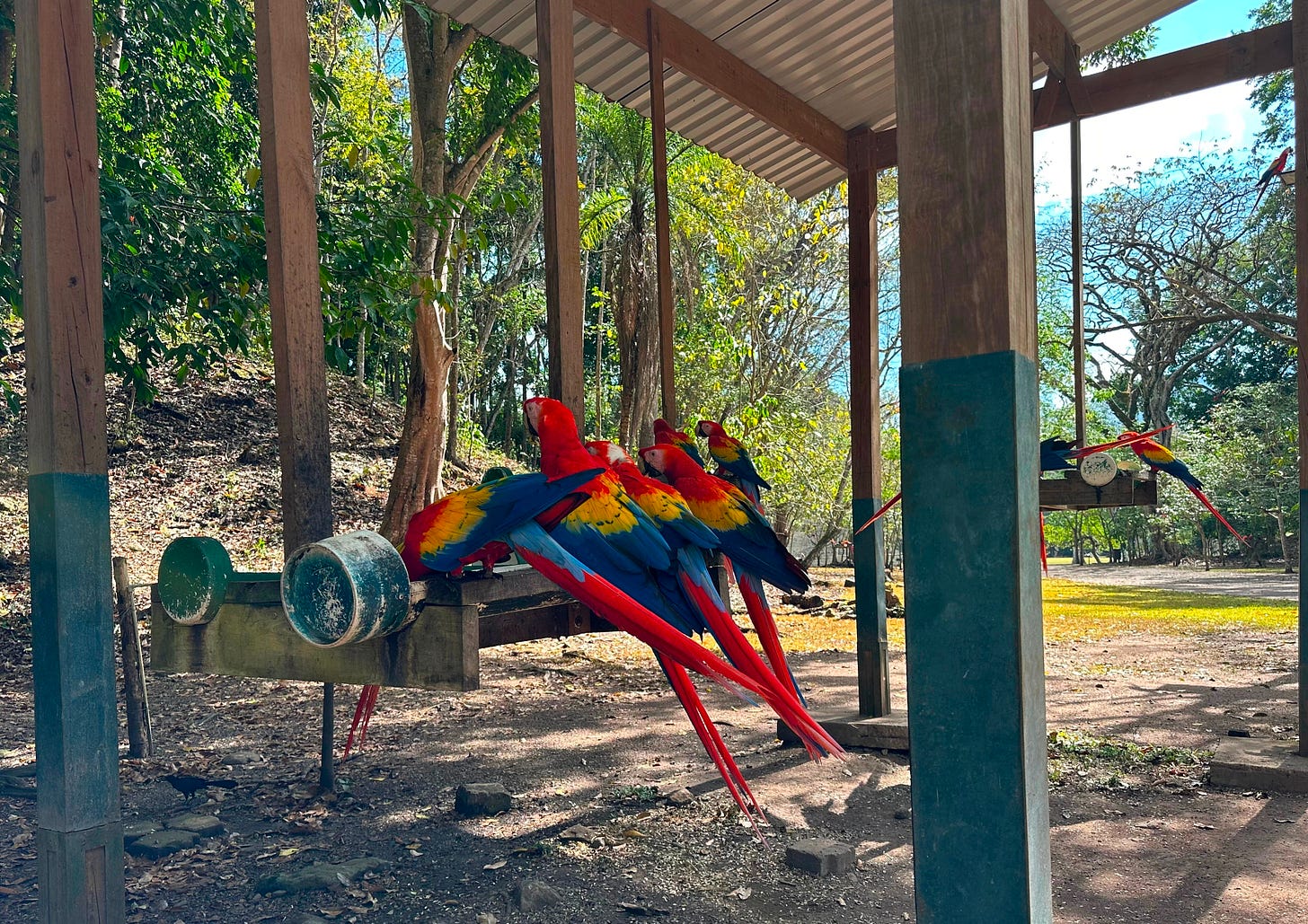
Currently reading stone jungle from john stephens l’oy and the discovery of the copan ruins. And it displays lots and lots of drawing of monuments with guacamayas scarved. Son muy bellas.
Yay for the conservation project! Gorgeous. I also love the photos of the ball court--I didn't know how important the macaws were to the culture.